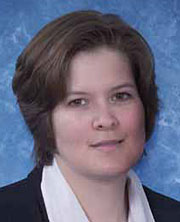| Research
|
|
||||||||||||||||||||||||
|
New Idaho facilities help safeguard critical infrastructure Across the country, a fleet of aging and unprotected computer-aided control systems operates critical infrastructures such as electric power grids, oil and gas refineries and telecommunications systems. These control systems, originally designed for efficiency and reliability, are today susceptible to cyber attacks by hackers, virus writers and adversaries looking to disrupt our way of life. To counter these threats, the U.S. departments of Energy and Homeland Security selected the Idaho National Engineering and Environmental Laboratory (INEEL) to support their efforts to reduce the vulnerabilities associated with supervisory control and data acquisition (SCADA) and other control systems. This designation creates a centralized location and state-of-the-art testing facility at the DOE's INEEL, which allows utility companies, equipment manufacturers and government agencies to find practical solutions to this growing problem. Last month, the INEEL officially opened the National SCADA Test Bed and the Control System Security and Test Center (CSSTC). The National SCADA Test Bed, sponsored by DOE, is operated in collaboration with Sandia National Laboratory. SCADA systems are a type of control system commonly used within electrical power distribution. The Department of Homeland Security is sponsoring the CSSTC to take action to reduce vulnerabilities in control systems that operate the nation's critical infrastructures. Housed within the center are functioning control systems from national and international manufacturers, a multi-functional cyber security test bed that is capable of performing cyber attacks and mock scenarios on various control systems, and an operational war room used for training and emergency management response. The INEEL testing facilities leverage research capabilities from other test beds located within its 890 square-mile complex—including a wireless telecommunication system and a power transmission structure—and at other DOE labs nationwide. These test beds will allow customers to visualize the effects of a cyber attack on a control system without the resulting consequences. Currently, the INEEL has working relationships established with over 30 utility companies and equipment manufacturers.Submitted by DOE's Idaho National Engineering and Environmental Laboratory |



